| 1 Very small, moth-like caddis flies (front wings: 1-6 mm); body and wings very hairy, however no shiny scales. Fore wing often with club-shaped, erected hairs, hind wing with very long fringe. Wing veins often strongly reduced. Maxillary palps of males and females with five segments, terminal segment not flexible or prolonged ............................................................................................................. Hydroptilidae (♂ & ♀) |
 |
|
▬
Larger
species, mostly > 5 mm. Other characteristic
combinations................... ................................ 2
|
|
|
2
Maxillary palps with 5-6 segments, sometimes rudimentary (
♂
or
♂&♀)...........................................
3
|
|
|
▬
Maxillary palps with fewer than 5 segments, always present (
♂
only )............................................ 15
|
|
|
3
Maxillary palps with 6 segments, ocelli
absent.....................................................................................
4
|
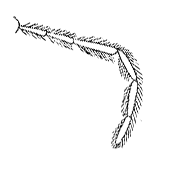 |
| ▬ Maxillary palps with 5 segments ......................................................................................................... 5 |
 |
| 4 Spur numbers 2:4:3; wings with fork 1(f1), fore wing 8-15 mm, antennae longer than the fore wing................................................................................................................. Calamoceratidae (♂ & ♀) |
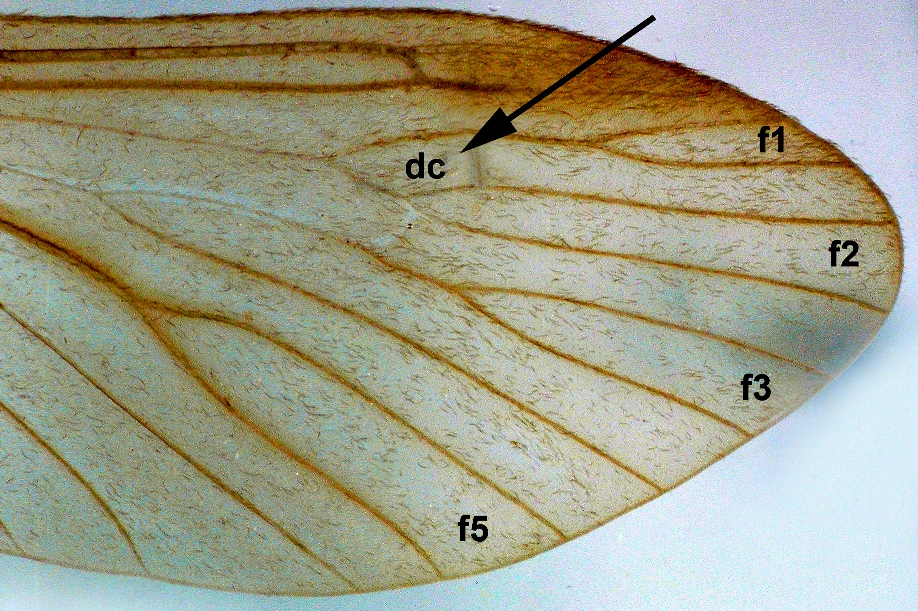 |
|
▬
Spur numbers 2:4:4; wings without fork 1, fore wing 2-4,5 mm; antennae
shorter than fore
wings.......................................................................................
Psychomyiidae: Paduniellia (only
♂♂)
|
|
| 5 External lobes of maxillae enlarged to form rostral processes; pronotum, large, without warts ............................................................................................................ Dipseudopsidae (♂ & ♀) |
  |
|
▬ External lobes of maxillae without rostral processes; pronotum with warts...........................................6
|
|
|
6 Terminal segment of maxillary palps flagellately prolonged, secondarily segmented and flexible; or palps vestigial ..............................................................................................................................................7 |
 |
|
▬
Terminal segment of maxillary palps no much longer and annulated; palps
always present................................................................................................................................................
12
|
|
| 7 Ocelli (oc) present......................................................................................... Philopotamidae (♂ & ♀) |
 |
|
▬
Very large insects, fore wing 21-28 mm; spur numbers
3:4:4..........................
Stenopsychidae
(♂
& ♀)
|
|
|
▬
Ocelli
absent....................................................................................................................................
8
|
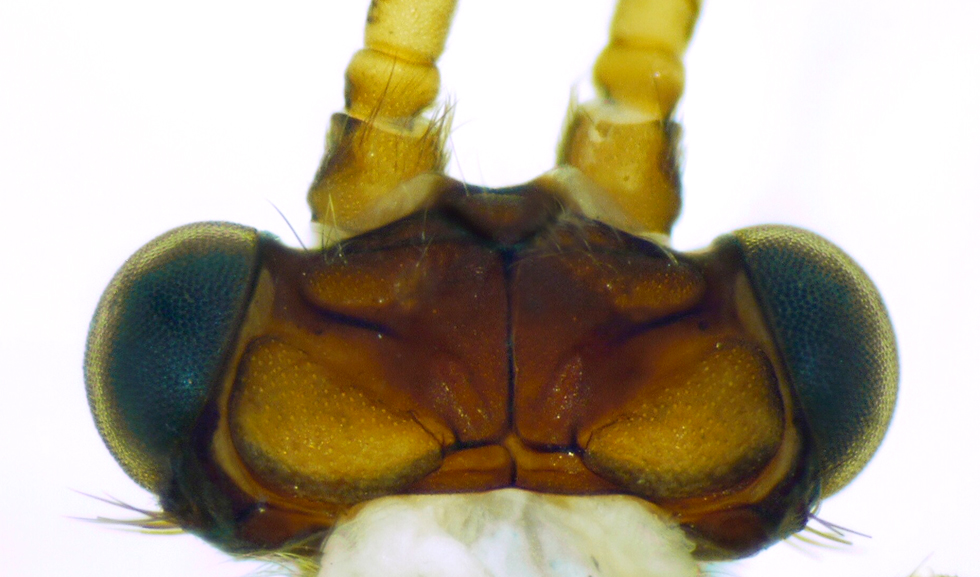 |
| 8 R1 in fore wing forked at the apex; corneous point absent from fork 2 in hind wing ...........................................................................................................................Ecnomidae (♂ & ♀) |
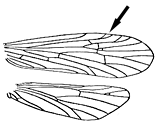 |
| ▬ R1 in fore wing not forked at apex; corneous point present in fork 2 in hind wing ...................... 9 |
 |
| 9 Fore tibiae with 3 spurs (3:4:4) ................................................................. Polycentropodidae (♂ & ♀) |
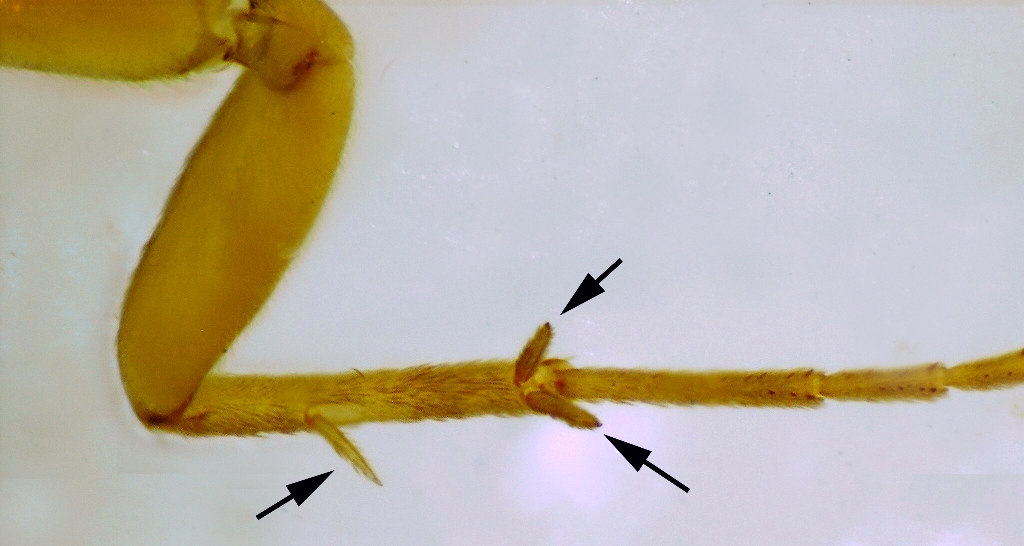 |
|
▬
Fore tibiae with less than 3
spurs....................................................................................................
10
|
|
|
10
Mesoscutum without warts; maxillary and labial palps present, reduced or
missing
............................................................................................................
Hydropsychidae
(♂
& ♀)
|
|
|
▬
Mesoscutum always with warts; palps present
............................................................................... 11
|
|
| 11 Mesoscutum with paired median warts: |
 |
|
▬
Spur numbers 2:2:4.........................................................
Psychomyiidae:
Psychomyiinae (♂
& ♀)
|
|
|
▬
Spur numbers 1:4: 4............................................................
Pychomyiidae: Paduniellia (♀♀ only )
|
|
| ▬ Mesoscutum with median field of setae; small pair of warts lateral to mesoscutellum; Spur numbers 1:4:4 or 1:4:3............................................................................................. Xiphocentronidae (♂ & ♀) |
 
|
|
12
Ocelli present
........................................................................................
Glossosomatidae
(♂
& ♀)
|
|
▬ Ocelli absent ................................................................................................................................. 13
|
|
|
13
Ventral process on 6th abdominal segment; spur number 2:2:4; wings
pointed, without scaled setae; at the base of fore wing without hairy
fold.............................................................................
Beraeidae (♂)
|
|
▬ Ventral process at the 6th segment absent...................................................................................... 14
|
|
|
14 Mesoscutum with 2 irregular lines of setae spots; antennae 2-3 times wing length; spur numbers 0:2:2, 1:2:2 or 2:2: 2................................................................................... Leptoceridae (♂ & ♀)
|
 |
▬ Mesoscutum different; antennae little longer or as long as fore wings................................................ 15
|
|
| 15 Pronotum with one pair of warts; palps usually long and slender; pair of tubercles on vertex; spur numbers 2:2:4............................................................................................ Hydrosalpingidae. (♂ & ♀) |
 |
|
▬
Pronotum with one pair of tranversal prolonged warts; mesoscutum without
warts but with 2 parallel lines of setae points; spur numbers
2:4:4.......................................................................... Atriplectididae
|
|
| ▬ Pronotum with two pairs of warts, palps normal; no tubercles on vertex..... Petrothrincidae (♂ & ♀) |
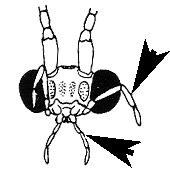 |
|
16
Spur numbers 2:4:4 or 2:4:3 or 2:3:3; pronotum usually with 2 pairs of
warts ................................... 17
|
|
|
▬
Spur numbers 2:4:3; maxillary palps with 3
segments....................................................
Pisuliidae (♂)
|
|
▬ Spur numbers 2:2:4 or 1:2:4; pronotum with one pair of warts (may be fused to form a single wart) ................................................................................................................................................ 18
|
|
| 17 Maxillary palps with 3 segments, third forming a large erectile accessory lobe with scent scales and setae, close-fitting to the head; vertex with single pair of large round warts; eyes smooth......... Goeridae (♂) |
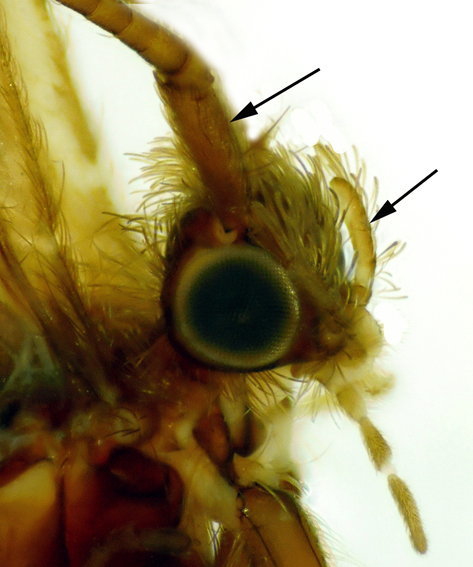 |
|
▬
Maxillary palps different, may have scent scales; vertex with two or more
pairs of warts. Eyes smooth or
hairy............................................................................................................
Lepidostomatidae
(♂)
|
|
|
18
Pronotum with one pair of warts, fused to form a long single wart..................
Barbarochthonidae (♂)
|
|
|
▬
Pronotum with one pair of warts,
separate.......................................................................................
19
|
|
| 19 Hind wings with hooklets; corneous points absent from wings; eyes smooth....... Helicopsychidae (♂) |
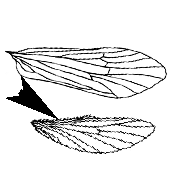 |
| ▬ Hind wings without hooklets; maxillary palps with 2 or 3 variform segments, close-fitting to the head; corneous points present in both wings; eyes hairy.................................................. Sericostomatidae (♂) |
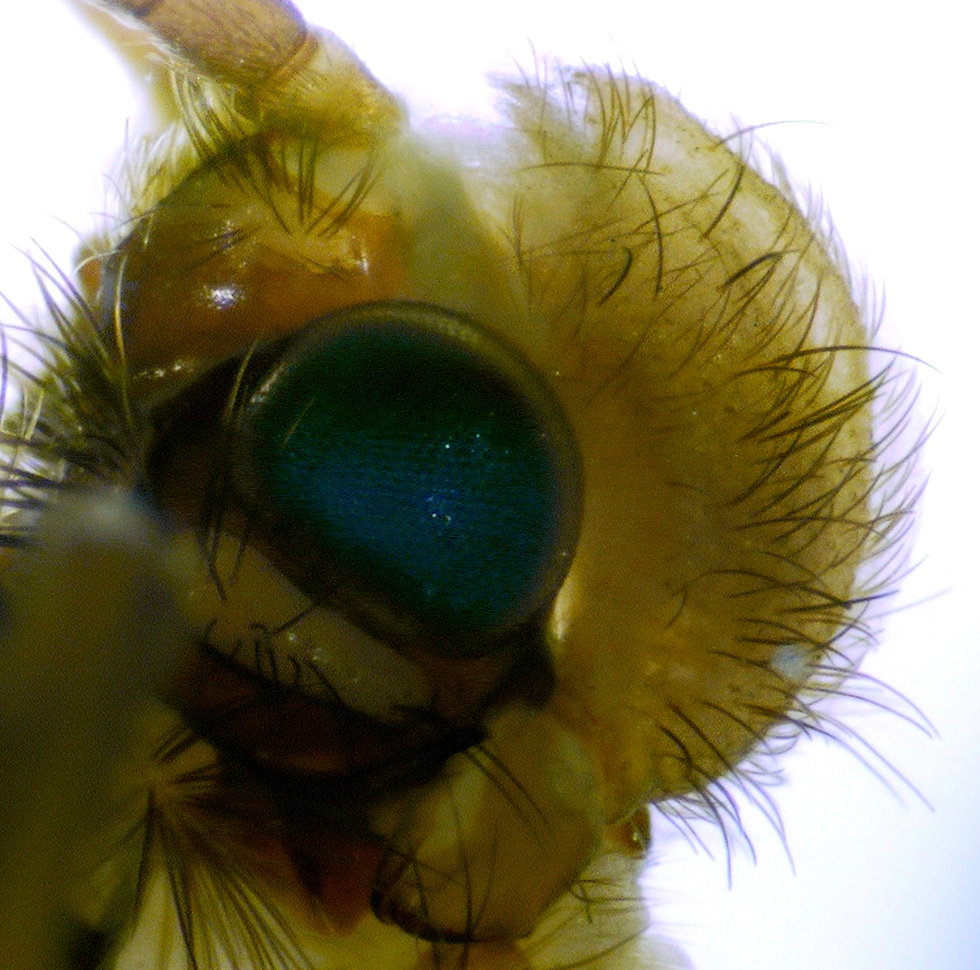 |